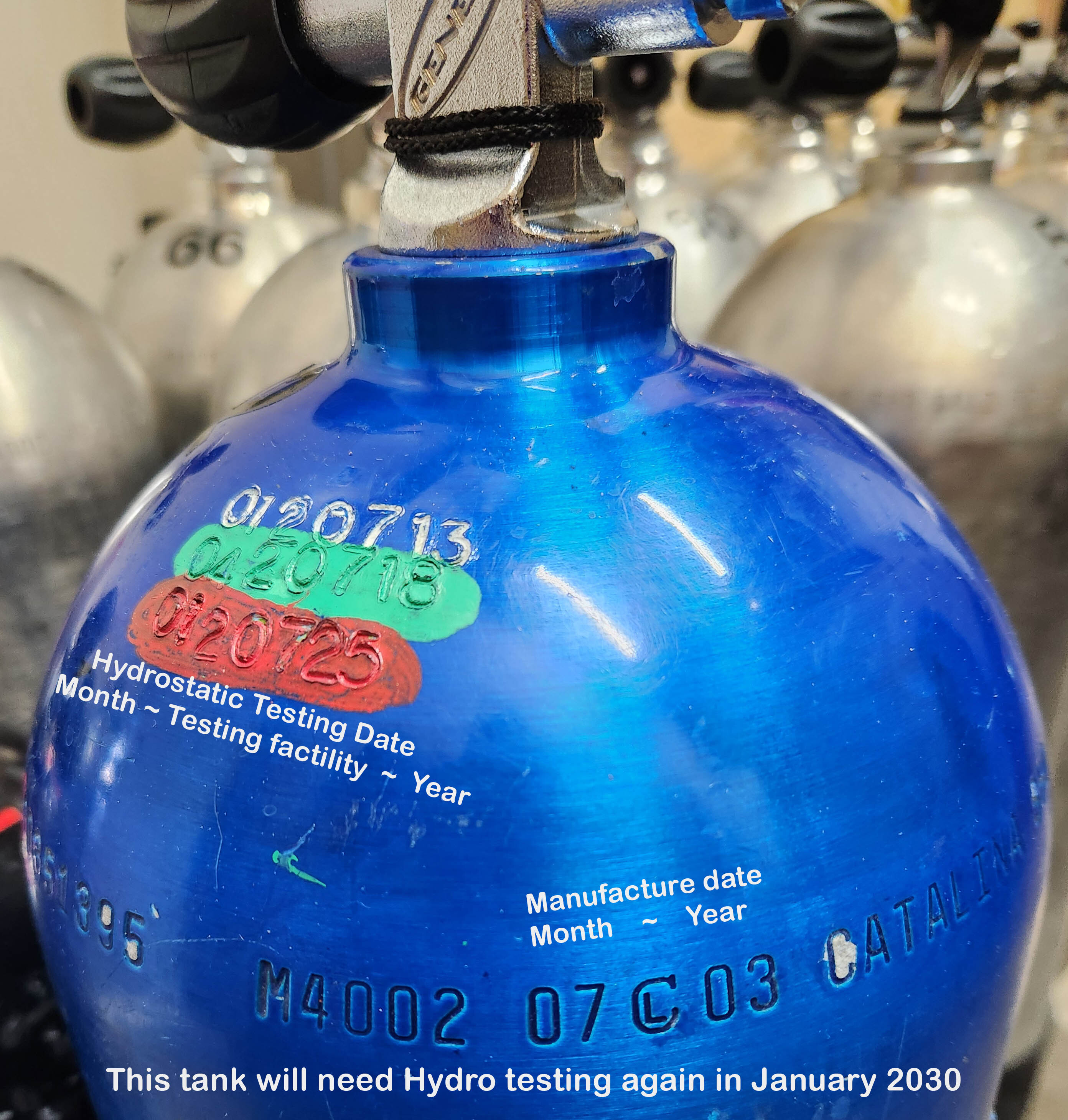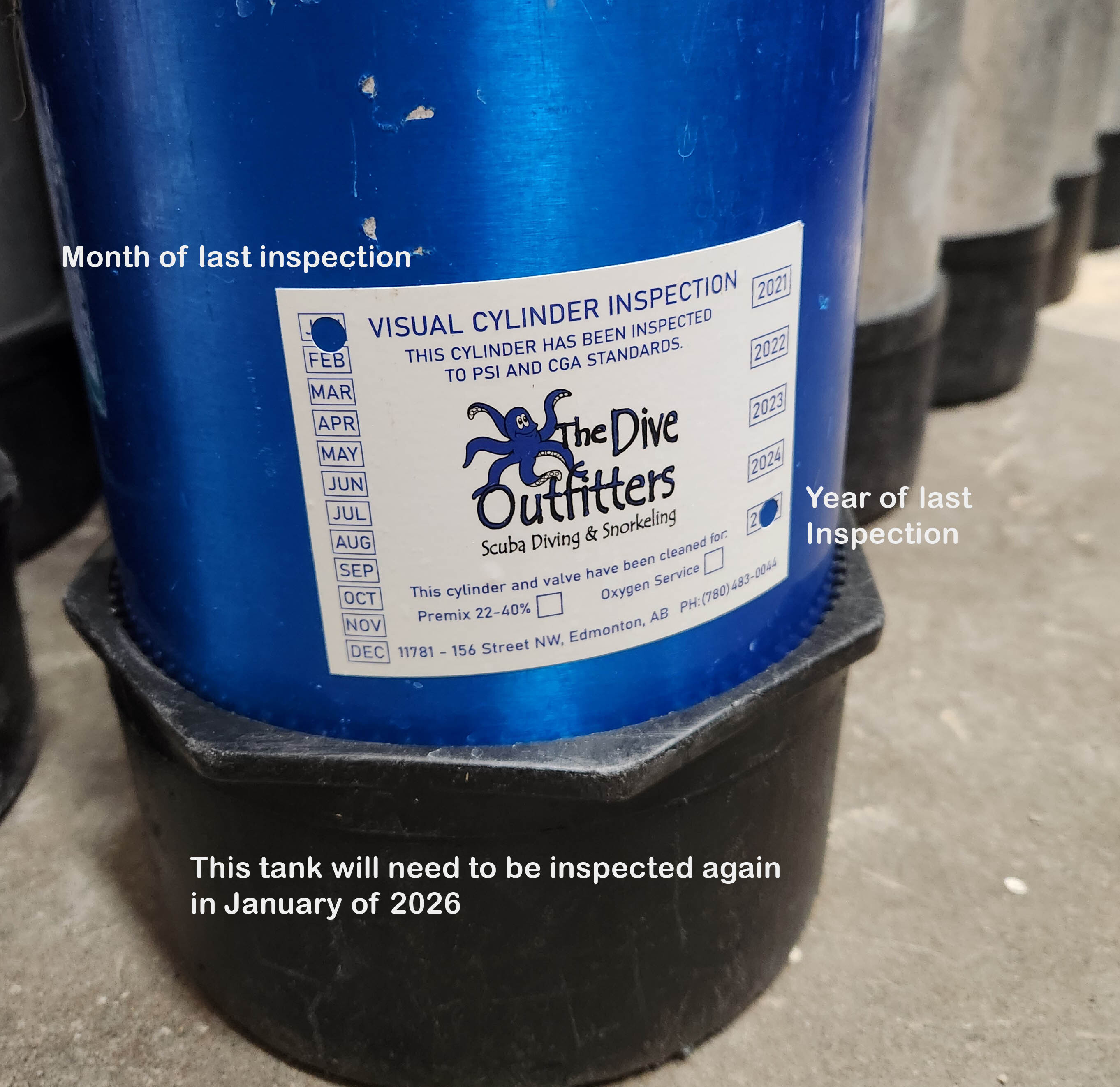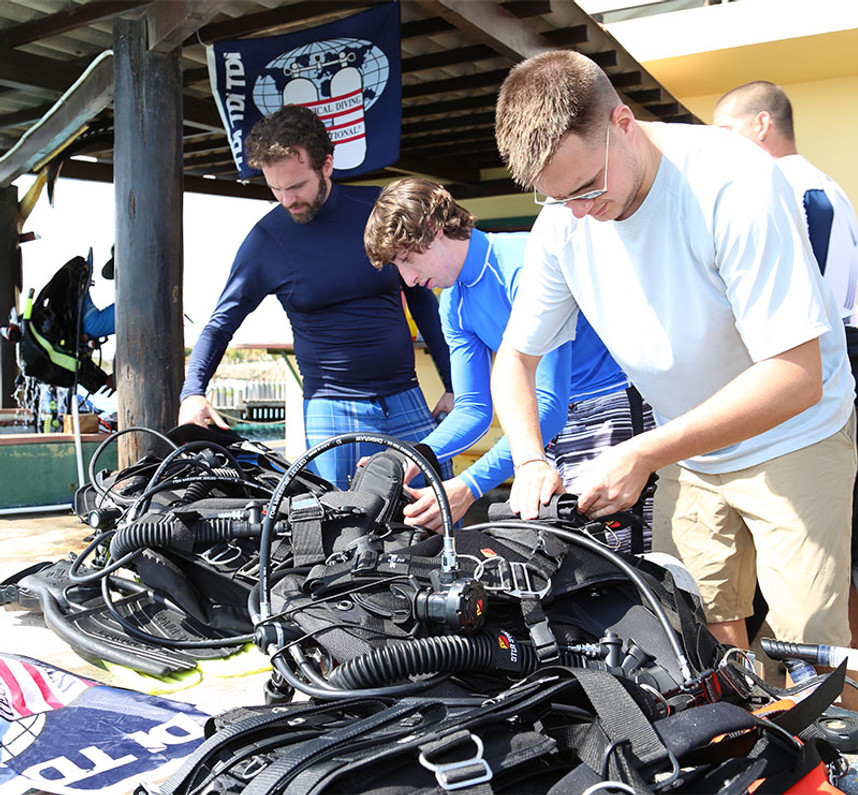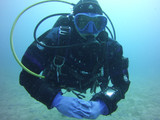When and why to get your gear serviced
As a scuba diver, you’ve likely invested a significant amount of money into your gear. But the true value of that investment is only realized when your equipment is in top condition—both for your safety and for your enjoyment of the sport. Regular maintenance is essential to keep your gear functioning properly and to extend its lifespan.
1. Tanks


Visual Inspection - Annually (Takes 1-2 days)
A visual inspection is required once a year to ensure your tank is free from damage, corrosion, or other issues that could affect performance. During this process, a qualified inspector will remove and inspect the valve and check both the inside and outside of the tank.
Hydrostatic Testing - Every 5 years (Takes about 2 weeks)
Hydrostatic testing is a legal requirement for all tanks every five years. This test ensures the structural integrity of the tank by applying high pressure.
Tank Valve Cleaning & Rebuilding - reccommended during hydro test or as needed
If your tank’s valve is damaged or contaminated, it’s important to clean and rebuild it to maintain optimal performance. This can be done during the hydrostatic test or sooner if necessary.
Prolonging Your Tank’s Life
-
Keep It Pressurized: Ensure your tank maintains a positive air pressure, which helps prevent contaminants from entering. as little as 200 psi is enought to keep the tank at a positive pressure
-
Store Indoors: Keep your tank in a cool, dry place—away from extreme temperature fluctuations. Avoid storing it in a shed or garage.
-
Choose Reputable Airfill Sources: Always get your airfills from reliable and well-maintained compressors to avoid contamination.
2. Buoyance Control Device
BCD Servicing - Every 2 years or 100 dives (Takes about a week)
Your buoyancy control device (BCD) is a crucial part of your diving setup, helping you maintain buoyancy and stability in the water. It’s essential to have it serviced regularly to ensure that components like the inflator, over-pressure valve, and air bladder are all functioning smoothly. If you notice any issues with your BCD, don’t wait for the two-year mark—bring it in sooner.
Prolonging the Life of Your BCD
-
Rinse It Thoroughly: After each dive, rinse the inside of your BCD with fresh water, especially after saltwater dives. Swish water around the bladder and drain it out completely.
-
Keep It Out of Sunlight: UV rays can degrade the material of your BCD, when possible keep it in a shaded area when not in use.
-
Store Properly: Ensure your BCD is clean and dry before storing it in a cool, dry space. If it has integrated weights, remove them before storage.
3. Regulators
Regulator Servicing - Every 2 years or 100 dives (Takes about a week)
Your regulators should be inspected and serviced on a regular basis. Dirt, sand, and salt can impede a regulator's performance. A free-flowing regulator at depth is the last thing you want to worry about while diving. This should be done if you notice any issues or damage or every 2 years or every 100 dives whichever comes first. Regulator servicing includes cleaning all parts in an ultra sonic cleaner, replacement of the filter, all o-rings, high and low pressure seats, calibration, inspection of hoses.
Prolonging the Life of Your Regulator
-
Rinse With Fresh Water: After each dive, rinse your regulator with fresh, warm water (never rinse the first stage without the dust cap in place).
-
Keep It Out of Direct Sunlight: UV rays can degrade materials, so avoid exposing your regulator to direct sunlight for prolonged periods of time.
-
Store Properly: Store your clean regulator in a cool, dry place to prevent damage and contamination.
4. Drysuits
Drysuit Servicing - Every 100 dives or if damaged
A drysuit is essential for cold-water diving, keeping you warm and dry. Regular servicing ensures that your drysuit’s inflator, exhaust and seals function correctly, preventing any issues like a sticky inflator or a leak. If your drysuit experiences any damage, it’s essential to get it repaired promptly.
Drysuit Leak Testing - As needed
Leaks in a drysuit can make for an uncomfortable dive. Leak testing can pinpoint any issues, so you can make necessary repairs before your next dive.
Drysuit Seal Replacement - As needed
The neck and wrist seals on your dry suit can stretch over time or become damaged. These seals are critical for keeping water out and maintaining warmth, so replacing them when they show signs of wear is essential. If your suit has replaceable seals, you may be able to do this yourself.
Drysuit Zipper Replacement - As needed
The waterproof zipper on your drysuit is one of the most important components, ensuring that your suit stays dry and functional. As your drysuit ages, the zipper will wear out and need replacing. Watch for fraying edges, damaged zipper teeth or leaks.
Prolonging the Life of Your Drysuit
-
Rinse Thoroughly: After each dive, rinse your drysuit, including the valves and seals, with fresh, warm water. Gently wash the seals with a mild soap to remove sweat, dirt, and salt.
-
Avoid Sun Exposure: UV rays can damage the material and seals of your drysuit. Store it in a shaded area whenever possible.
-
Store Properly: Hang your drysuit in a cool, dry place, preferably using a heavy-duty hanger. Avoid storing it near chemicals or car exhaust, as these can degrade the materials.
Recent Posts
-
Scuba Refresher Courses: Why They’re Essential for Every Diver
If you take a look at your scuba certification card, you’ll notice there’s no expir …2025 Apr 7th -
Local Scuba Diving Available During the Summer
Fresh water diving is available all summer and into the fall in various lakes around the province …2024 May 29th -
Top 5 reasons to start Snorkeling
There are so many reasons to go on a nice, warm, tropical vacation during the winter, especially her …2024 Mar 7th




